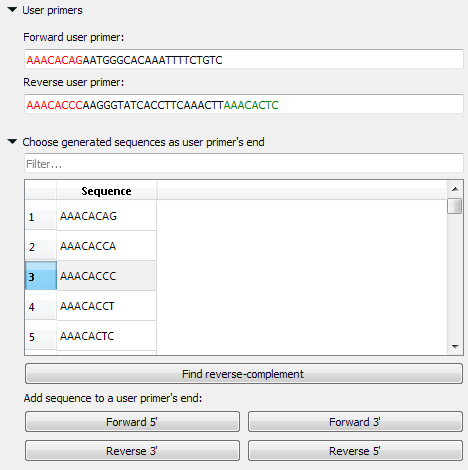...
Other sequences in PCR reactions
Sequences which that are supposed to be in the reaction the reaction mixture. It's Its important primers do not have unwanted connections to these sequences, so it will be checked that there are no hairpins, self- or hetero-dimers between the result resulting primer and any sequence from the "Other sequences in PCR reaction" file.
Result
The search result is from 1 to 4 pairs of primers. The results should be as close as possible to the amplified fragment. That means, that the searching process starts from the edge of the amplified fragment to the 5' direction on the direct strand in case of the forward primer and to the 3' direction of the reverse-complementary strand in case of the reverse primer. The results are defined with special names:
- A - the pair of primers closest to the amplified fragment, corresponding to the entire set of parameters.
- B1 - the pair of primers closest to the amplified fragment, corresponding to the entire set of parameters if B2 and/or B3 exist.
- B2 - the pair of primers corresponding to the entire set of parameters, which has a 4-nucleotide intersection with B1.
- B3 - the pair of primers corresponding to the entire set of parameters, which starts immediately when B1 ends.
Also, you may see results in the result table. A single click on the result in the result table selects the corresponding annotation, double click - export the resulting primer to the separate file (with the backbone sequence, which will be added during the exporting process).
User primer
You may check the validity of the pair of primers by typing this pair into the corresponding fields. Also, you may add your primers 5' or/and 3' 8 bases endings, which do not form simple unwanted connections.

